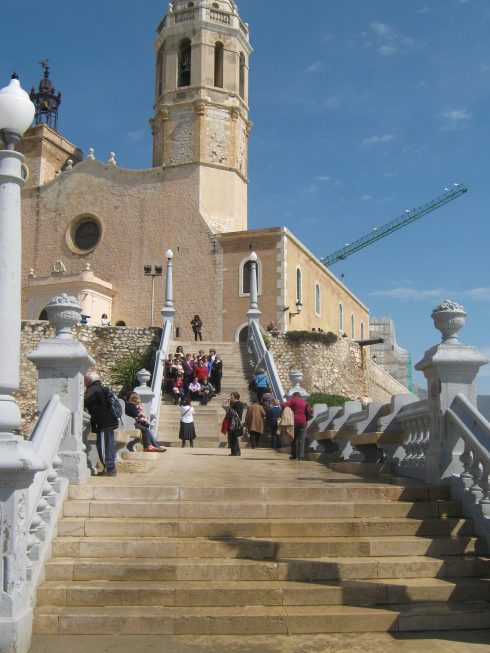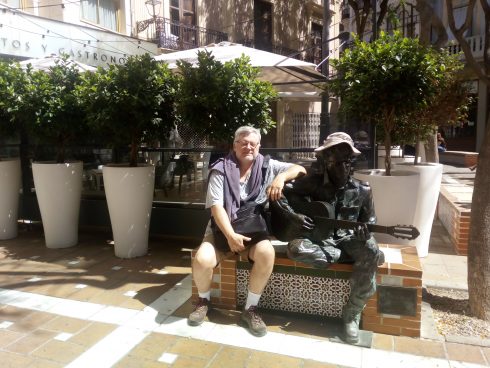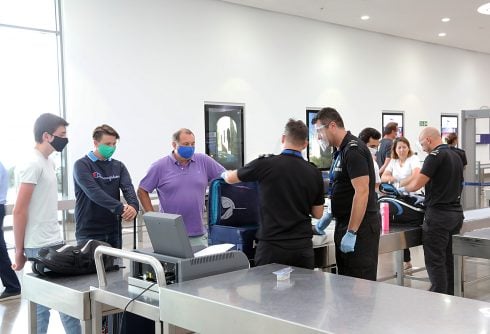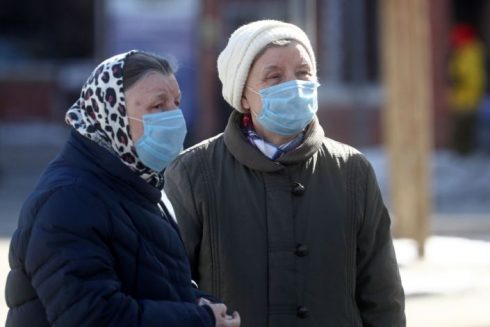As I was saying, the owner of the hotel in Las Fraguas gave us some good information, and the next day we went in search of one suggestion, the redwood forest of Cantabria, a plantation brought here from America to foster the timber industry. Thelma was quite taken aback.

Cantabria has had an interesting cinema history, and in fact promotes cinema tourism with leaflets and postcards in the tourist information offices.
Before he started on his spaghetti westerns, Sergio Leone tried some moussaka odysseys first. Curiously, in The Colossus of Rhodes (1961) he depicted Mediterranean scenery using locations from the greenest part of Spain, the northern coast, and specifically at Laredo and Santander in Cantabria and Luarca and Oviedo in Asturias.
The main filming took place at the harbour entrance with the gigantic statue astride the entrance, although in fact only the 25 metre high legs were ever built there, the rest being tricks of the trade.
Although set in southern France, we are informed by Javier, son of the film’s producer, Javier Armet of Anabel Films, the school for mischievous girls in The House that Screamed (1969) was the Palacio del Marqués de Comillas in Cantabria, an imposing Gothic building designed by Juan Martorell, next door to Gaudí’s El Capricho, belonging to the same aristocrat.
The building appears at the beginning of the film, when an unsuspecting father delivers his daughter there, riding through the grounds up to the building.

Naughty goings on at a girls’ school, and apparently featuring the first ever close-up, slow-motion murder in Spanish cinema history.
The first thing we see inside the school is a teacher giving a dictation and punishing a recalcitrant student with solitary confinement.
German-born actress Lilli Palmer stars, towards the end of a long career.
The Corruption of Chris Miller (1973)
The Chris Miller in question is none other than Marisol, a teenage phenomenon in post-war Spain who later cast off her Hayley Mills image to become a politically active adult actress.
Here she shares the screen with Jean Seberg, her mother in a film about the classic ‘man who popped out just to buy a packet of cigarettes,’ while a serial killer prowls the neighbourhood.
Javier, son of the film’s producer, Javier Armet of Anabel Films, said that shooting took place at ‘La Casa de la Baronesa,’ on the road from Comillas to La Rabia in the Parque Natural de Oyambre in Cantabria.
Everybody told us that it was a private house very hard to find, and they were right because we didn’t.
Antonio Banderas leads the cast in Altamira (2016), which includes Rupert Everett as the evil(ish) Monsignor, in a film directed by Oscar winner Hugh Hudson, he of ‘Chariots of Fire.’
The film tells the story of the discovery in 1879 of the caves with their prehistoric paintings, and the shallowness of human nature.
The locations are mostly fairly accurate, in Cantabria, at Santander, Castro Urdiales and cobblestoned Santillana del Mar, whose Plaza Mayor stands out, as does the Colegiata de Santa Juliana, which is where the Banderas family go to see a painting and Banderas gives his daughter a geology lesson in the cloister after her unsuccessful violin concert. Later, after Banderas (Marcelino) presents his discovery of the cave to local dignitaries, we see a horse and cart descending Calle Cantón.
Nearby we can find the cliffs at El Bolao (Cóbreces), where Banderas speaks to his daughter and the painter does too.
Also appearing is one of architect Gaudí’s few buildings outside Catalonia, El Capricho, the summer house (or the aristocratic version of a shed) built in the 1880s at Comillas. It is here that Banderas attends a meeting of enlightened scientists in Paris at the beginning of the film.

When Banderas tries his luck in a congress in Lisbon, and fails, he is in fact still in Spain. The Biblioteca (Library) Menéndez y Pelayo of Santander provides the exterior, while the Palacio de Sobrellano at Comillas is the interior.
Banderas’s grave can be seen in the cemetery at Comillas, although Marcelino’s is elsewhere. His house, which was his real one, is at Marcelino’s estate at Puente San Miguel.
Click here to read more Silver Screen Spain (on The Road With Thelma) News from The Olive Press.








